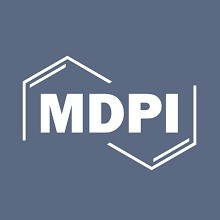
مقاله انگلیسی اثرات کووید-19 در فرآیند یادگیری دانش آموزان دبستانی
Abstract
Open Access and Permissions
Share and Cite
Article Metrics
Order Article Reprints
Abstract
(1) Background: A variety of social and economic changes are happening worldwide due to the pandemic caused by COVID-19, which has produced new problems and challenges for the population as a whole. These events demand new investigations and key studies for their management. This review addresses the repercussions of COVID-19 at the educational level in the primary education stage, delving into the effects produced in teaching and different aspects related to it, such as the situation and challenges of teachers, family involvement, and the perceptions and repercussions of the learning and socio-educational development of students (especially in the case of students with Autism Spectrum Disorder). (2) Methods: The methodological design is a systematic review study, following the PRISMA guidelines, from a search carried out during the month of July 2021 in the Scopus, Dialnet, and WoS databases on the object of study. (3) Results: The selected studies were analyzed through a qualitative content analysis based on a population of 103 articles, with a final sample of 13, using the inclusion criteria: empirical studies or research in English or Spanish; free access through the Internet; categories restricted to “education/educational research” related to the proposed objectives; specific documents of the primary education stage and/or students with Autism Spectrum Disorder. (4) Conclusions: The research reveals the presence of an existing digital gap in certain sectors of the student population aggravated by the pandemic, as well as the scarcity of general teacher training in this type of situation, leading to different personal and professional problems that hinder teaching and emphasize the vulnerability of the right to education, which leads to further promoting the already existing social inequalities.
1. Introduction
According to UNESCO (United Nations Educational, Scientific, and Cultural Organization) [1], the starting point of the new pandemic was Wuhan, the capital of Hubei, which belongs to central China. The date of its origin is estimated to be December 2019. The name established for this disease is COVID-19, known as a coronavirus type characterized by symptomatologies associated with severe acute respiratory syndrome (SARS-COV-2). The transmission of this virus is associated with the social relationship between people, placing its highest rate of contagion in direct person-to-person transmission. In order to prevent the spread of COVID-19, all the governments of the affected countries have decided to carry out different measures to control it.
